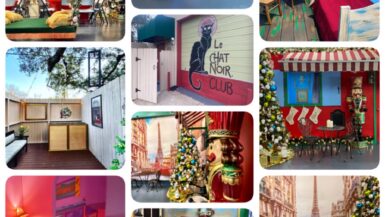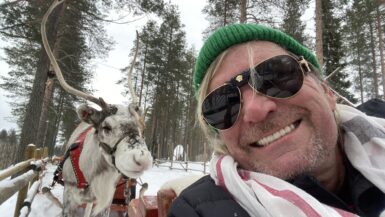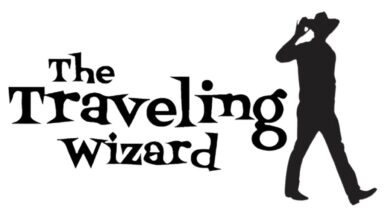When you think of Jamaica, you’re likely to conjure up a mental picture of Bob Marley before you think of anything else. There’s no other country in the world where one musician seems to represent the embodiment of an entire culture like Marley is to Jamaica. The dreadlocks, the red/green/yellow color scheme seems sooooo Jamaican. But is it? The answer might surprise you. Look no further than the Ethiopian flag. Does it look familiar? That’s because the Rasta movement is about Ethiopia, not Jamaica.
Ethiopia was the only African country that was never colonized by a western power. Countries like Kenya and Egypt were controlled by the English, The Belgians had The Congo, and much of North Africa was secured by the French. Every European country seemed to want a piece of the Dark Continent, but somehow Ethiopia sidestepped any attempts to take them over. A prominent figure emerged, a king who claimed to be from the lineage of Sheba and Solomon and dressed like a character from “Coming to America”. His name was Haille Selassie and he was the perfect poster boy for Africa. Called by many “The Lion of Africa”, Haille represented everything cool about the continent. Haille had more than one name because of the different languages he spoke. He was called Tafaria, his title was Ras (king). If you haven’t already figured it out, he was Ras Tafaria.
In the 1920s, a popular Jamaican political leader named Marcus Garvey had predicted that one day a black man would be crowned king in Africa. This king would be a divine being that would bring deliverance to the dark-skinned people of Africa and the rest of the world. In 1930 when Selassie was crowned, this prophecy appeared to be coming true.
To the poor Jamaican population, Tafaria was more than just an Ethiopian king.He appeared to them to be the chosen one. Jamaicans, like many other former slaves, had been robbed of their culture and sense of belonging. The idea of going back to Africa and redefining native roots was very appealing to many of them . Africa became known as “Zion” by the Jamaicans. The white man’s world was called “Babylon”. The people who idolized Tafari embraced many of the Ethiopian traditions. An Ethiopian vegan lifestyle without alcohol or salt was adopted, the colors of the Ethiopian flag embraced and dreadlocks became a symbol of a lion ‘s mane and roots connecting man to God. The long hair is also strongly associated with the biblical story of Sampson and other Old Testament scripture. The Jamaicans accepted many traditional biblical teachings but felt like the white man had altered the sacred text to make African slaves more subservient to their masters. Sulassie explained to his followers that he was not the Messiah. In spite of his protests, many were certain that was the chosen one. The new cult took Tafari’s name. They became the Ras Tafarians.
This small cult never really gained worldwide acceptance until Robert Marley popularized it. Born Catholic, Marley converted in the 60s, grew his dreadlocks and started writing songs with spiritual elements. When asked about his religious beliefs, the singer once mentioned, “I would say to the people, Be still, and know that His Imperial Majesty, Emperor Haile Selassie of Ethiopia is the Almighty…. I don’t see how much more reveal our people want. Wha’ dem want? A white God, well God come black. True true.” Many of Bob Marley’s songs are about reuniting Africa and deal with other Rastaferian beliefs. Many casual listeners don’t really listen to the worlds or are just reminded of tropical vacations and beaches when they hear the reggae sound.
In 1966 Selassie visited Jamaica to an ecstatic crowd of thousands. He appropriated 500 acres of land of his country to Jamaicans or other people of African descent who wished to move to Ethiopia. Bob Marley visited Ethiopia in 1978 and stayed in Shashamane, the village that had been formed by those who had taken Selassie’s offer. It was thought that a large percentage of the one million adherents might move to “Zion”, but that never really happened. Fifty plus years later, there’s about 800 Rastafarians that live in the town. For all the songs about moving back to Africa, hardly anyone actually did it: including Marley himself. Shashamane remains a bizarre little enclave in Ethiopia peopled by Rasta followers. Ganja, ironically enough is illegal in Ethiopia, though it’s tolerated in that community to a certain extent.
Bob Marley died in 1981 of skin cancer that had started on one of his toes. He refused to treat it because of his religious beliefs. Like Marilyn Monroe, Elvis and James Dean, Marley has become more of a brand than the person he really was. He symbolizes Caribbean music, smoking weed, and is often associated with Ethiopian flag colors.
In 2015, a statue of Marley was installed in Addis Ababa for Bob’s 70th birthday celebration. In 2005, Rita Marley, Bob Marley’s widow announced she would be moving his body to be reburied in Ethiopia. That never happened. The famous singer still rests in tomb in his home in Nine Mile, Jamaica. Marley’s music continues to inspire the world from the Americas to Africa. Even though most people have no idea what it’s about.
Africa, Unite
‘Cause we’re moving right out of Babylon
And we’re going to our father’s land
How good and how pleasant it would be
Before God and man, yeah
To see the unification of all Africans, yeah
As it’s been said already let it be done, yeah
We are the children of the Rastaman
We are the children of the Higher Man
Africa, Unite ’cause the children wanna come home
Africa, Unite ’cause we’re moving right out of Babylon
And we’re grooving to our father’s land






Leave a reply
You must be logged in to post a comment.